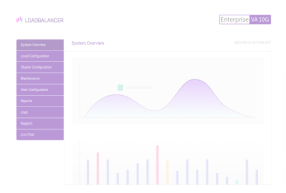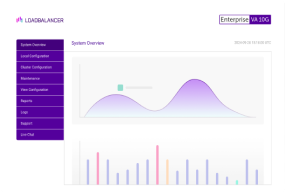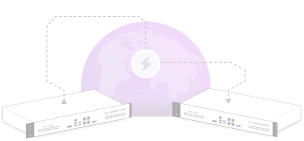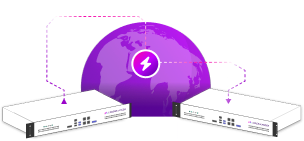Load balancing Oracle JD Edwards EnterpriseOne
Benefits of load balancing Oracle JD Edwards EnterpriseOne
The top three benefits of load balancing Oracle JD Edwards EnterpriseOne are:
- High Availability (HA): Load balancing eliminates single points of failure. By distributing traffic across multiple servers (e.g., HTML/JAS servers), if one server fails, the load balancer automatically redirects traffic to the remaining healthy servers. This ensures uninterrupted service and maximizes system uptime, which is critical for a business-essential ERP system.
- Optimum performance: Load balancing effectively distributes user requests and processing tasks across all available servers, preventing any single server from becoming a bottleneck. This leads to faster response times for end-users, especially during peak load periods.
- Scalability: It also allows more servers to be added, easily scaling horizontally to accommodate future business growth or increased user concurrency without sacrificing performance.
About Oracle JD Edwards EnterpriseOne
Oracle JD Edwards EnterpriseOne offers a powerful, fully-integrated ERP software suite that provides more choice of databases and deployment options, including on-premise, private cloud, public cloud or hybrid cloud for maximized flexibility and low total cost of ownership.
Why Loadbalancer.org for Oracle JD Edwards EnterpriseOne?
Loadbalancer’s intuitive Enterprise Application Delivery Controller (ADC) is designed to save time and money with a clever, not complex, WebUI.
Easily configure, deploy, manage, and maintain our Enterprise load balancer, reducing complexity and the risk of human error. For a difference you can see in just minutes.
And with WAF and GSLB included straight out-of-the-box, there’s no hidden costs, so the prices you see on our website are fully transparent.
More on what’s possible with Loadbalancer.org.
How to load balance Oracle JD Edwards EnterpriseOne
The load balancer can be deployed in 4 fundamental ways: Layer 4 DR mode, Layer 4 NAT mode, Layer 4 SNAT mode, and Layer 7 Reverse Proxy (Layer 7 SNAT mode).
For Oracle JD Edwards EnterpriseOne, Layer 7 Reverse Proxy mode is recommended because it’s simple to implement and does not require any mode specific changes to the Oracle JD Edwards EnterpriseOne servers.
Virtual service (VIP) requirements
To provide load balancing and HA for Oracle JDEdwards EnterpriseOne, one VIP is required.
Load balancing deployment concept
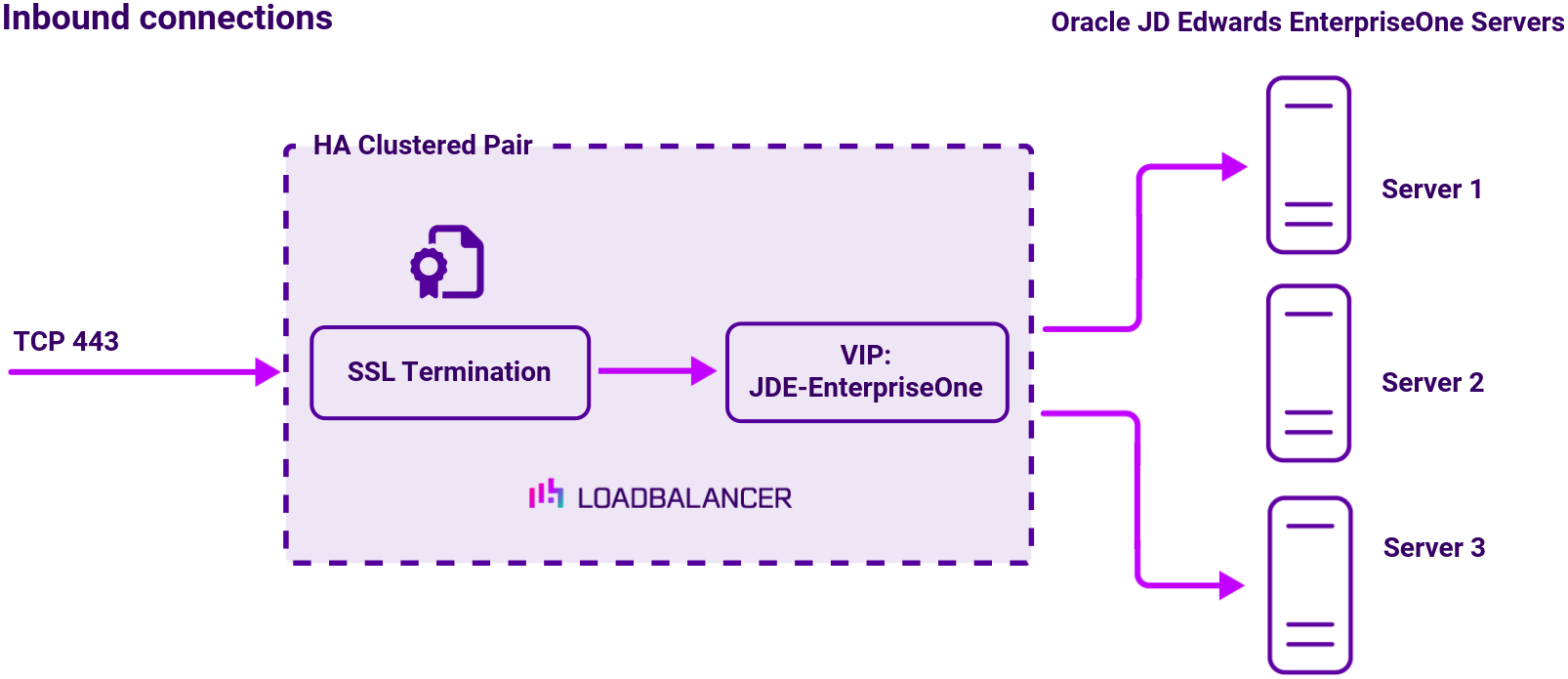
Note
The load balancer can be deployed as a single unit, although Loadbalancer.org recommends a clustered pair for resilience and high availability.
Load balancing topology
Layer 7 Reverse Proxy can be deployed using either a one-arm or two-arm configuration. For two-arm deployments, eth1 is typically used for client side connections and eth0 is used for Real Server connections, although this is not mandatory since any interface can be used for any purpose.
For more on one and two-arm topology see Topologies & Load Balancing Methods.
About Layer 7 Reverse Proxy load balancing
Layer 7 Reverse Proxy uses a proxy (HAProxy) at the application layer. Inbound requests are terminated on the load balancer and HAProxy generates a new corresponding request to the chosen Real Server. As a result, Layer 7 is typically not as fast as the Layer 4 methods. Layer 7 is typically chosen when either enhanced options such as SSL termination, cookie based persistence, URL rewriting, header insertion/deletion etc. are required, or when the network topology prohibits the use of the Layer 4 methods.
The image below shows an example Layer 7 Reverse Proxy network diagram:
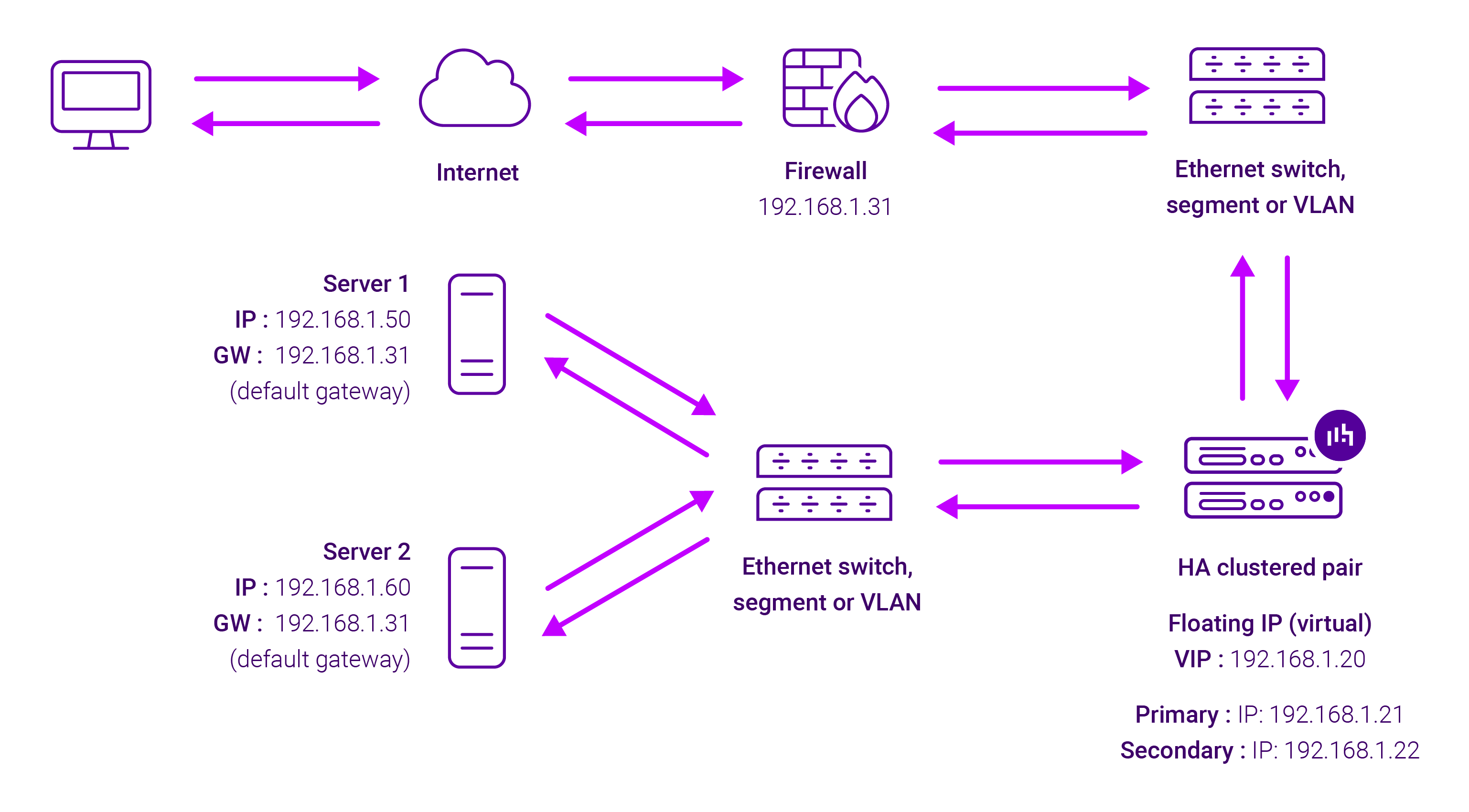
Because Layer 7 Reverse Proxy is a full proxy, Real Servers in the cluster can be on any accessible network including across the Internet or WAN.
Layer 7 Reverse Proxy is not transparent by default, i.e. the Real Servers will not see the source IP address of the client, they will see the load balancer’s own IP address by default, or any other local appliance IP address if preferred (e.g. the VIP address).
This can be configured per Layer 7 VIP. If required, the load balancer can be configured to provide the actual client IP address to the Real Servers in 2 ways. Either by inserting a header that contains the client’s source IP address, or by modifying the Source Address field of the IP packets and replacing the IP address of the load balancer with the IP address of the client. For more information on these methods, please refer to Transparency at Layer 7 in the Enterprise Admin Manual.









